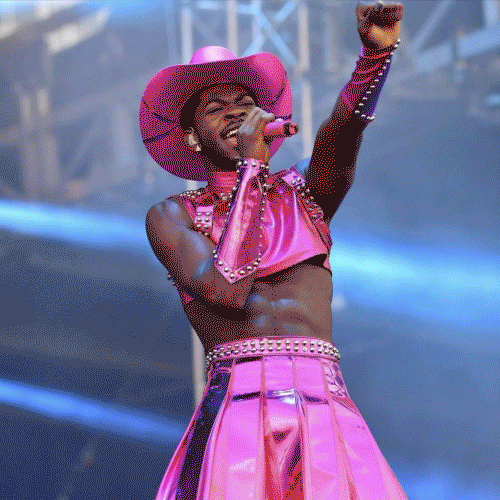Not Every Body is a Beach Body: On Public Policing of Gender-Nonconformity
The first time I heard the phrase “people watching,” I was a young child walking around at the county fair with my parents and brothers. The fair, my mom said to me, is a good place for “people watching.”
Though I’d never named it, I’d already been “people watching” for years, obliviously scanning crowds for faces and bodies that seemed beautiful, interesting, or strange to me. Giving a name to the practice validated it, making it into a kind of game. I played this game at the county fair for several years during my youth, often with friends. We would walk around the boot-stomped grounds and point out whatever we considered notable. Sometimes our judgments seemed innocent, but other times we were petty, even cruel. We stared at people. We laughed at them. We made jokes to each other about the way that people dressed, about the shapes of their bodies, or the way they walked and talked. Looking back, being “watchers” made us feel powerful, and it entitled us to a degree of false superiority. But I don’t think we ever considered that we were also being watched.
I began to realize that other people were looking at me when I was a pre-teen playing in the surf at a public beach in North Carolina. The beach was another place I considered good for “people watching.” Indeed, I had spent a lot of time there just looking at people, considering them, judging them. But, as my body developed and my self-concept become more concrete, I noticed how other people did the same thing to me—but less childishly. Adults with blonde-headed toddlers stared aggressively at the way my chubby body spilled out of my purple bikini. They looked with even more concern at the curly black hairs that had begun to grow on my legs, under my arms, and on my upper lip. Their staring made me nervous. The beach went from feeling like a playground to seeming invasively intimate. Looking down on myself in my swimsuit, I wondered for the first time if what I was seeing was normal. Soon after, I started using my moms razor to cut away at my body hair. And, while browsing catalogues for next year’s swimsuit, I thought of ways to make myself smaller, less conspicuous.
The rest of the story is sad and common: I started resenting my body hair and went to painful lengths to remove it; I developed an eating disorder; I exclusively wore tankinis and one-piece swimsuits until I was 17. These experiences were, in part, a response to the social shame I felt being stared at on the beach and in other intimate settings. Since coming out as queer a couple years ago, I’ve thought more intensely about how public shaming is used as a tool to undermine and regulate gender-nonconformity and other expressions of queerness. Conversations I’ve had with gender-nonconforming and trans friends have further confirmed a sobering reality: the beach and other settings where bodies are on prominent display are transformed into sites of queer anxiety by social shaming and public policing of non-normative bodies. These acts of social shaming effectively keep gender nonconforming queer people from enjoying and utilizing public beaches in the same way that straight, gender-normative patrons do, and they reaffirm that “family-friendly” spaces are often, in practice, explicitly anti-queer.
Gender-nonconforming people are subject to unjust social policing, shaming, staring, and gawking in every public space.
Gender-nonconforming people are subject to unjust social policing, shaming, staring, and gawking in every public space. They—in addition to other groups whose bodies are marginalized—must think constantly about the way public shaming shapes their public lives. Everywhere they go, makeshift armies of people attempt to enforce gender and sex binaries, silently communicating that “femininity is not compatible with body hair and fatness,” or “masculinity is not compatible with breast tissue,” and other lies. The fact that many people who stare and gawk at gender nonconforming people in public do not realize that they are policing non-normative expressions of gender is beside the point. Children, especially those who inherit multiple privileged identities, are trained from a young age by parents and other authorities to recognize and note deviation from established norms. When my friends and I stared at strangers at the county fair, we were implicitly looking for people who seemed to violate the status quo, and, in a small way, attempting to correct that violation, just as “community-watch” patrols might try to deter crime by watching and reporting “strange activity” in their neighborhoods. It seemed innocuous to me at the time, but I was wielding a weapon of social control. Gender-nonconforming people who are publicly shamed feel the hostility and rejection inherent in being singled out and marginalized from the group. The marginalization they experience could, and often does, result in violence and harassment. It may be so severe and constant that they feel they cannot safely leave their homes, especially to go somewhere like the beach.
The “family-friendly” character of beaches typically applies to heteronormative, white, affluent, nuclear families at the exclusion of most other kinds of kinship and camaraderie.
Beaches are particularly fertile sites of queer anxiety because of how they are coded in the minds of straight, cisgender patrons who feel entitled to access them. In addition to being sites in which bodies are on prominent display (and thus subject to intense policing and shaming), beaches are often characterized as being “family-friendly” environments where hetero parents can “safely” have fun with their children. The “family-friendly” character of beaches typically applies to heteronormative, white, affluent, nuclear families at the exclusion of most other kinds of kinship and camaraderie. Various kinds of bodies—the poor, the disabled, the non-white, and the queer—are easily shunned as “unfriendly” to family values. Thus, the patrons at many beaches are much whiter, richer, and straighter than the population as a whole. The power that this exclusive group has is undergirded by their collective fear of difference. Straight families may view gender nonconforming people’s bodies and identities as corrosive to the (oppressive) values they are teaching their children about gender and identity broadly. And since many straight families consider the “family-friendly” public beach to be their domain, they feel entitled to try to push non-normative bodies and expressions out through small but effective actions such as social shaming, staring, gawking, and policing. However, these gestures are just the bottom tier of a pyramid of socially sanctioned trans-misogyny and homophobia in which violence and harassment are the next logical step.
That being said, not all beaches are coded the same way. This past May, I had an opportunity to explore Riis beach in New York City, a community beach created for queer, trans, and gender-nonconforming people. It is both beautiful and tragic how magical it felt to lay out in the sand with so many queer and gender-nonconforming bodies, totally unworried and unashamed. But Riis is but a tiny portion of a larger shoreline, and the nearby “family-friendly” portion of the beach is inching closer to Riis’ contestable, undefined border, threatening the open displays of queerness and genderfucking that flourish there. Obviously, queer and gender-nonconforming folk deserve more than the occasional safe-haven amidst a tumultuous sea of unwelcome glares and unfriendly interactions. They should be able to walk anywhere, wearing anything, and feel the same degree of safety and comfort that cisgender, straight, able-bodied white men feel walking in public.
In fact, recognizing the way we each perpetuate and engage in the social shaming and policing of various kinds of bodies and identities is necessary to disrupting oppressive systems broadly. When we engage in social shaming and policing, or turn a blind eye to the way others do, we act as foot soldiers for the powerful institutions that do real, daily violence to marginalized members of our communities, gender-nonconforming people among them. Though a positive catch phrase like “all bodies are beach bodies” sounds sweet and encouraging, it does not adequately address the real danger people with nonnormative bodies face when they put on a swimsuit and head for the shore. Queers and allies must actively work to combat public shaming and policing when they see it, and to create explicitly pro-queer, non-judgmental spaces like Riis beach for queer people who want and need safe public getaways. After all, a space is not truly “public” until queer people—regardless of gender expression—can exist there unafraid and unashamed.
Archive
- February 2025
- November 2024
- October 2024
- September 2024
- August 2024
- July 2024
- June 2024
- May 2024
- April 2024
- October 2023
- July 2023
- June 2023
- May 2023
- April 2023
- March 2023
- February 2023
- June 2022
- April 2022
- March 2022
- January 2022
- December 2021
- October 2021
- September 2021
- August 2021
- July 2021
- June 2021
- May 2021
- April 2021
- March 2021
- February 2021
- January 2021
- December 2020
- October 2020
- September 2020
- August 2020
- July 2020
- June 2020
- May 2020
- April 2020
- March 2020
- February 2020
- January 2020
- December 2019
- November 2019
- October 2019
- September 2019
- August 2019
- July 2019
- June 2019
- May 2019
- April 2019
- March 2019
- February 2019
- January 2019
- December 2018
- November 2018
- October 2018
- September 2018
- August 2018
- July 2018
- June 2018
- May 2018
- April 2018
- March 2018
- February 2018
- January 2018
- December 2017
- November 2017
- October 2017
- September 2017
- August 2017
- July 2017
- June 2017
- May 2017
- April 2017
- March 2017
- February 2017
- January 2017
- December 2015
- November 2015
- October 2015
- September 2015
- August 2015
- July 2015
- June 2015
- May 2015
- April 2015










